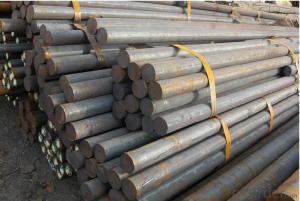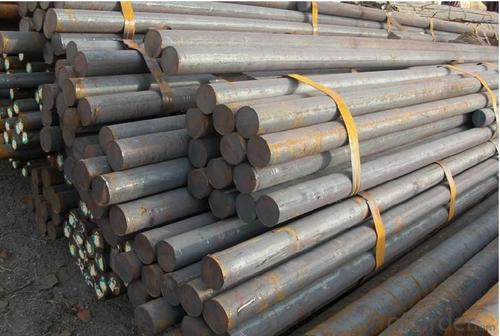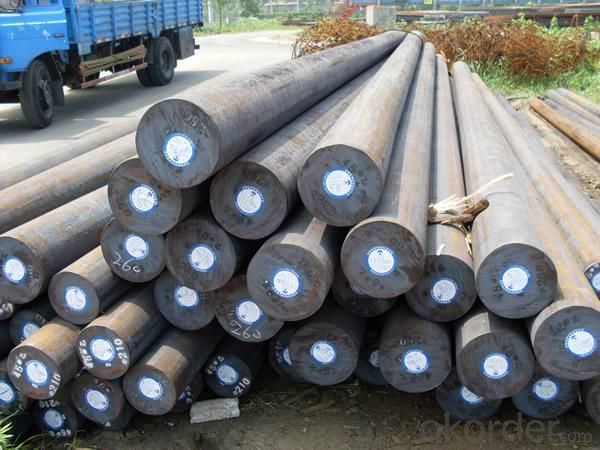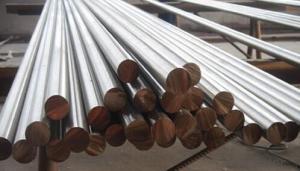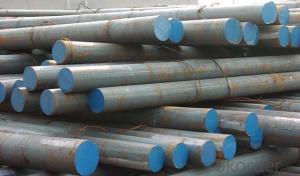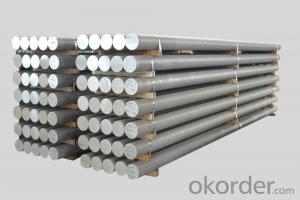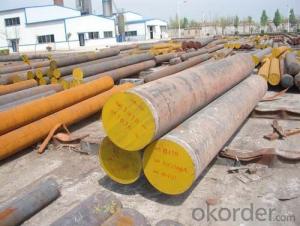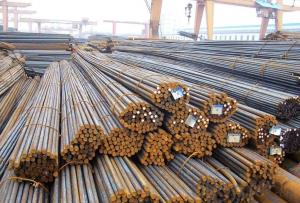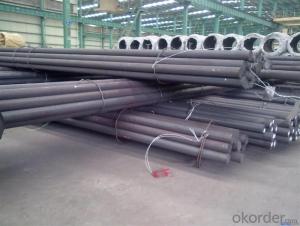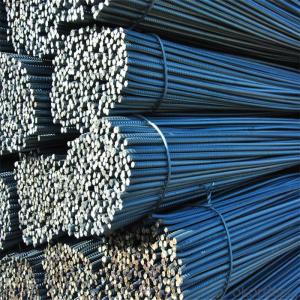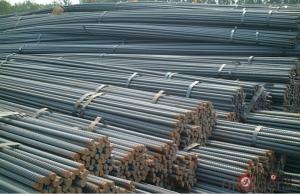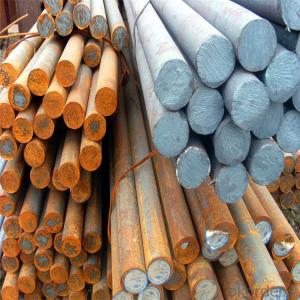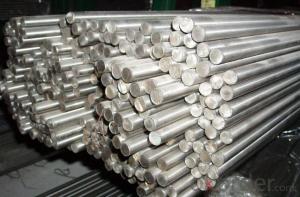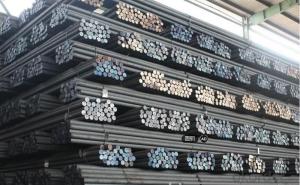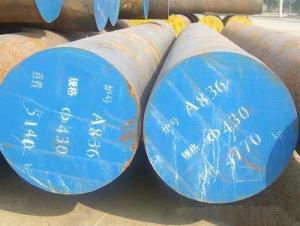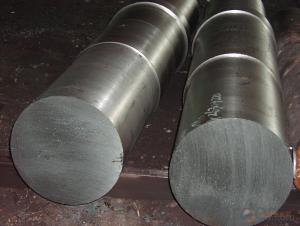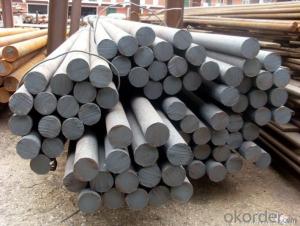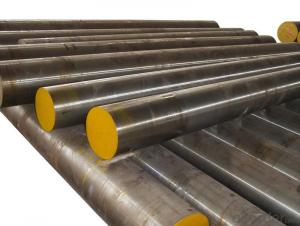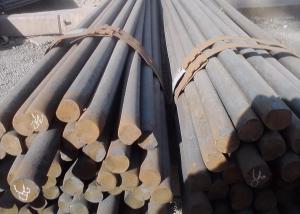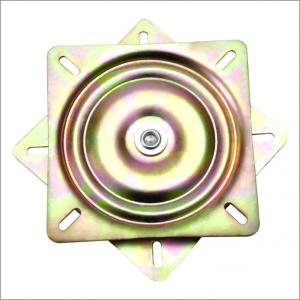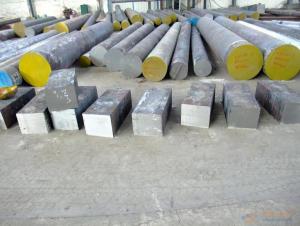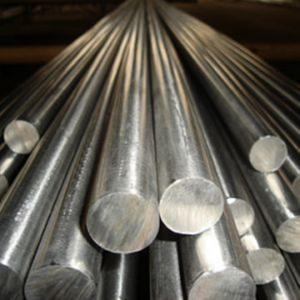S65C Alloy Steel Bar Round Flat Square Shape
- Loading Port:
- Tianjin
- Payment Terms:
- TT OR LC
- Min Order Qty:
- 25 m.t.
- Supply Capability:
- 50000 m.t./month
OKorder Service Pledge
OKorder Financial Service
You Might Also Like
Specification
S65C Alloy Steel Bar Round Flat Square Shape
Product Description:
1. Sizes: Diameter: 16mm-300mm; Length: 6m, 9m, 12m
2. Grade: S65C
3. Invoicing on theoretical weight or actual weight as customer’s request
4. Shape: Round bar, solid bar of steel with circular section
5. Technique: Hot rolled, forged, cold rolled
Specifications:
Material | S65C | Round bar | Dia(mm) | Max 700 |
Process | EAF + LF + VD + Forged + Heat Treatment (optional) | Length (mm) | Max 12000 | |
Heat treatment | Normalized / Annealed / Quenched / tempered | Plate bar | Thickness(mm) | Max 200 |
Delivery condition | Hot forged +Rough machined (black surface after Q/T)+ Turned (optional) | Width(mm) | Max 3000 | |
Test | Ultrasonic test according to SEP 1921-84 D/d | Length (mm) | Max 12000 |
Chemical Composition:
Standards: ASTM,JIS,GB,EN(DIN,BS,NF)
Grade | C | Si | Mn | Cr | Ni | Cu |
AISI 1055 | 0.62~0.70 | 0.17~0.37 | 0.50~0.80 | ≤0.25 | ≤0.30 | ≤0.25 |
Delivery condition:
EAF+LF+VD+(ESR), rolled / forged, annealed / Q+T, black/peeled/turned, UT tested
Application:
Carbon steel rod applies to chemical industry, shipping industry,manufacturing industry, construction, decorate industry, electric power, pump shafts, sanitary wares, furniture handles, boiler, high temperature resistant,low temperature resistant,corrosion resistant
Sales Information:
Material | High Quality Carbon Structural Steel S65C |
Size | Diameter:10-700mm Length:6000mm-12000mm |
Origin place | Made In China |
Delivery Condition | Hot rolled, cold drawn, forged |
Surface require | Black, grinding, bright, polish |
Heat treatment | Quenched, Tempered, annealed |
Packing | Seaworthy packing ,wooden case ,carton,woven bag or at client's requires |
Delivery time | According to order’s quantity. |
Trade Term | EXW,FOB,CIF |
Payments | T/T or L/C at sight |
Port | China main Port, such as shanghai, Dalian, Shenzhen port. |
MOQ | 25 Metric Ton |
Product show:
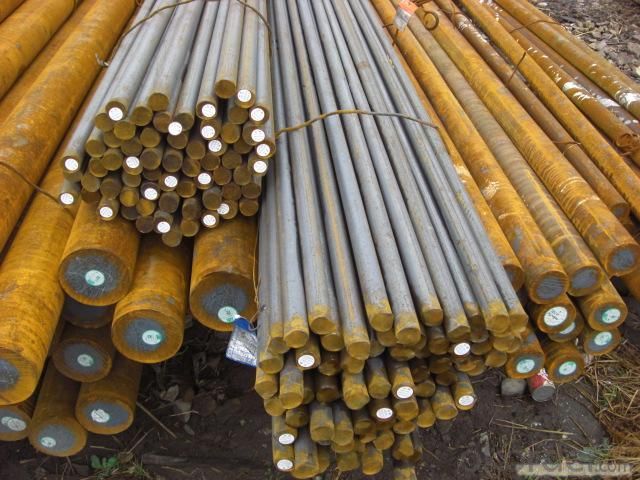


- Q: How does special steel contribute to the aerospace defense machinery industry?
- Special steel plays a critical role in the aerospace defense machinery industry by providing the necessary strength, durability, and performance required for various components and systems. Firstly, special steel alloys are used in the manufacturing of aircraft structures, such as wings, fuselage, and landing gear. These components require materials that can withstand extreme forces, temperature fluctuations, and corrosive environments. Special steel alloys possess unique properties, including high strength-to-weight ratio, excellent fatigue resistance, and resistance to corrosion, making them ideal for ensuring the structural integrity and longevity of aerospace defense machinery. Moreover, special steel is essential for producing engine components, including turbine blades, shafts, and casings. These parts operate under extreme conditions, such as high temperatures, pressures, and rotational speeds. Special steel alloys with high heat resistance, excellent mechanical properties, and good creep resistance are crucial for ensuring optimal engine performance, fuel efficiency, and reliability. In addition to structural and engine components, special steel is used in the manufacturing of various defense systems, such as missile guidance systems, radar systems, and communication equipment. These systems require materials that offer electromagnetic compatibility, high strength, and resistance to vibration and shock. Special steel alloys with specific electromagnetic properties, such as low magnetic permeability or high electrical conductivity, contribute to the efficient functioning of these systems. Furthermore, the aerospace defense machinery industry heavily relies on special steel for the production of precision tools, cutting blades, and molds used in the manufacturing process. These tools must possess high hardness, wear resistance, and dimensional stability to ensure accurate and efficient processing of complex components. Overall, special steel is a crucial enabler for the aerospace defense machinery industry as it provides the necessary strength, durability, and performance required for the demanding and often harsh operating conditions in this sector. The unique properties of special steel alloys contribute to the development of advanced and reliable aerospace defense machinery, enhancing the capabilities and safety of military and defense operations.
- Q: How does special steel contribute to the marine aftermarket industry?
- Special steel plays a crucial role in the marine aftermarket industry by offering a wide range of benefits and applications. Firstly, special steel is known for its exceptional strength and durability, making it an ideal material for manufacturing marine components and parts. These components include propeller shafts, rudders, marine engine parts, and various structural elements. The marine environment is harsh and corrosive, with constant exposure to saltwater, waves, and extreme weather conditions. Special steel, such as stainless steel or corrosion-resistant alloys, is specifically designed to withstand these corrosive elements. It provides excellent resistance to rust, pitting, and other forms of corrosion, ensuring the longevity and reliability of marine equipment. Furthermore, special steel is often used in high-performance marine engines and turbines due to its excellent heat resistance and mechanical properties. It can withstand high temperatures and pressures, making it suitable for marine propulsion systems that require superior performance and efficiency. Additionally, special steel is employed in the construction of marine vessels, including ships, offshore platforms, and submarines. Its high strength-to-weight ratio allows for the construction of lightweight yet sturdy structures, leading to improved fuel efficiency and overall performance. Moreover, special steel's ability to withstand impact and fatigue loading makes it an essential material for ensuring the safety and structural integrity of marine vessels. Moreover, special steel contributes to the marine aftermarket industry through its versatility. It can be easily fabricated and customized to meet specific design requirements, allowing for the production of unique and tailored marine components. This flexibility enables the marine aftermarket industry to provide a wide range of replacement parts and upgrades for existing vessels, enhancing their performance, efficiency, and safety. In summary, special steel is a vital component in the marine aftermarket industry. Its strength, durability, corrosion resistance, and versatility make it an essential material for manufacturing marine components, constructing vessels, and improving overall performance. With its unique properties, special steel helps ensure the safety, reliability, and efficiency of marine equipment, contributing to the growth and success of the marine aftermarket industry.
- Q: How does special steel contribute to the waste management industry?
- Special steel contributes to the waste management industry in various ways. Its exceptional strength, durability, and resistance to corrosion make it ideal for manufacturing equipment used in waste management processes. Special steel is extensively used in the construction of waste sorting systems, recycling machinery, and waste containers, ensuring their longevity and reliability. Additionally, special steel can be recycled itself, reducing the environmental impact of waste management operations and promoting sustainability in the industry.
- Q: What are the different testing methods used for special steel?
- Some of the different testing methods used for special steel include hardness testing, tensile testing, impact testing, metallographic examination, ultrasonic testing, and magnetic particle testing.
- Q: What are the different electrical grades of special steel?
- There are several different electrical grades of special steel, including electrical steel grades such as grain-oriented (GO) steel and non-grain-oriented (NGO) steel. These grades are specifically designed to exhibit certain magnetic properties, making them suitable for use in transformers, motors, and other electrical applications. Additionally, there are also stainless steels with specific electrical properties, such as high electrical conductivity or resistance to corrosion in electrical environments, which are used in various electrical components.
- Q: Is the steel column of the steel structure HM a special steel?
- Because the legs are parallel inside and outside, the legs are at right angles and are assembled and assembled into components to save welding and riveting, and the work load is 25%. Often used in large capacity requirements, large cross section stability, such as buildings, high-rise buildings, as well as bridges, ships, lifting transport machinery, equipment foundation, support, foundation piles.
- Q: Does special steel have any magnetic properties?
- Yes, special steel can have magnetic properties, depending on its composition and treatment. Steel is primarily composed of iron, and iron is a ferromagnetic material, meaning it can be magnetized. However, the presence of other elements such as nickel, cobalt, and certain alloys can affect the magnetic properties of steel. For instance, stainless steel, which contains chromium and nickel, is generally non-magnetic or only weakly magnetic. On the other hand, materials like tool steel or high-speed steel can exhibit stronger magnetic properties due to their composition and heat treatment. Therefore, it is important to consider the specific type of special steel and its alloying elements when determining its magnetic properties.
- Q: How is corrosion-resistant steel used in marine environments?
- Corrosion-resistant steel is used extensively in marine environments due to its ability to withstand the harsh conditions of saltwater exposure. It is commonly used in the construction of ships, oil rigs, offshore platforms, and other marine structures. The steel's high resistance to corrosion helps prevent rusting and deterioration, ensuring the longevity and durability of these structures in the corrosive marine environment.
- Q: How does special steel resist oxidation?
- The outstanding resistance to oxidation exhibited by special steel is well-known. This is mainly attributed to the inclusion of elements like chromium, nickel, and manganese in its composition. These elements combine to create a passive film, known as a protective layer, on the steel's surface. This film effectively shields the steel from oxygen and moisture. Chromium is the principal element responsible for the oxidation resistance of special steel. It undergoes a reaction with atmospheric oxygen, resulting in the formation of a thin layer of chromium oxide on the steel's surface. This oxide layer is exceptionally stable and prevents any further oxidation of the underlying metal. It acts as a protective shield, hindering the penetration of oxygen and moisture into the steel, which could otherwise lead to corrosion or rusting. Moreover, nickel and manganese also contribute to the oxidation resistance of special steel. They assist in stabilizing the passive film created by chromium oxide and enhance its protective properties. These elements also bolster the steel's ability to withstand high temperatures and corrosive environments. Furthermore, the composition and processing techniques employed in the production of special steel play a vital role in its oxidation resistance. The steel is often subjected to heat treatment processes, such as annealing or quenching, which further enhance its resistance to corrosion. Through meticulous control of alloying elements and precise heat treatment procedures, a robust and long-lasting passive film is formed. In conclusion, special steel's ability to resist oxidation is primarily due to the presence of chromium, nickel, and manganese, which collaborate to create a protective layer on its surface. This passive film acts as a barrier against oxygen and moisture, effectively preventing corrosion and rusting. Additionally, the composition and processing techniques utilized during production significantly contribute to the exceptional oxidation resistance of special steel.
- Q: What is the role of chromium in special steel?
- The unique properties and characteristics of chromium are crucial in special steel. It is added primarily to steel alloys to enhance their corrosion resistance, durability, and strength. One significant contribution of chromium is its ability to form a passive oxide layer called chromium oxide on the steel's surface. This layer acts as a protective barrier, preventing corrosive elements like oxygen and moisture from reaching the steel. The corrosion resistance of chromium-containing steel makes it highly suitable for harsh environments, such as the marine or chemical industries. Moreover, chromium improves the mechanical properties of steel. It increases hardness, toughness, and wear resistance, making it valuable in manufacturing tools, machinery components, and other applications that require strength and durability. Chromium also helps retain sharpness and edge retention, making it ideal for high-quality knives and blades. Additionally, chromium is essential in heat-resistant steel alloys as it significantly improves the material's ability to withstand high temperatures without losing strength or shape. This makes it suitable for applications in turbine blades, exhaust systems, and aerospace components. In conclusion, chromium plays a vital role in special steel by enhancing corrosion resistance, improving mechanical properties, and enabling high-temperature resistance. These properties make chromium-containing steel alloys highly valuable and versatile in various industries and applications.
Send your message to us
S65C Alloy Steel Bar Round Flat Square Shape
- Loading Port:
- Tianjin
- Payment Terms:
- TT OR LC
- Min Order Qty:
- 25 m.t.
- Supply Capability:
- 50000 m.t./month
OKorder Service Pledge
OKorder Financial Service
Similar products
Hot products
Hot Searches
Related keywords
